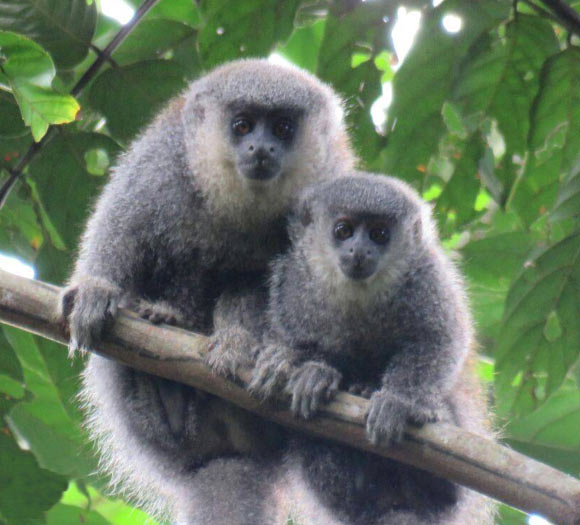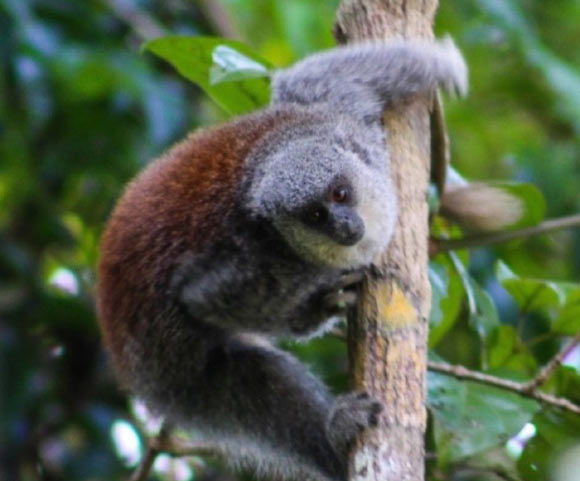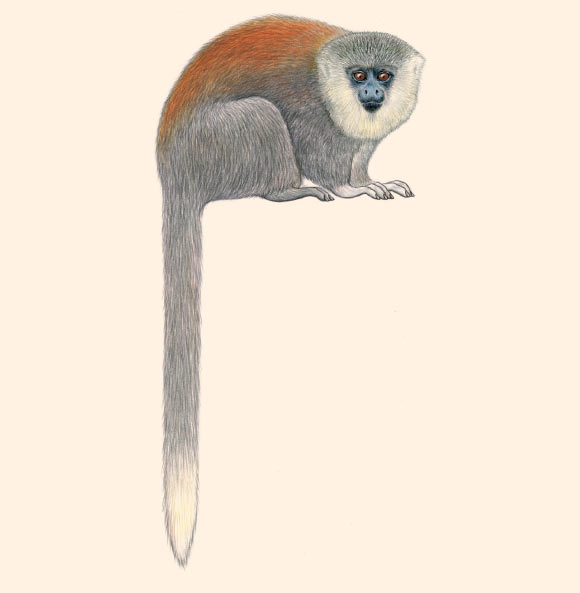An international team of researchers has discovered a new species of titi monkey living in the forests of Brazil.

Parecis titis (Plecturocebus parecis) in the forest reserve of the UHE Rondon II hydroelectric plant, municipality of Pimenta Bueno, Rondônia, Brazil. Image credit: Alberto Caldeiras.
Titi monkeys are one of the most diverse Neotropical primate groups, with over 30 species currently recognized.
These tree-dwelling monkeys are small, between 23 and 46 cm (9-18 inches) tall. They have long, soft fur and striking coloration.
Titi monkeys live in small family groups consisting of a monogamous pair and their offspring.
They are primarily fruit eaters, and prefer dense forests near water and easily jump from branch to branch, earning them their German name, jumping monkey.

The Parecis titi (Plecturocebus parecis) in the forest reserve of the UHE Rondon II hydroelectric plant, municipality of Pimenta Bueno, Rondônia, Brazil. Image credit: Manoel Pinheiro.
The newfound species belongs to the genus Plecturocebus, an Amazonian group of titi monkeys.
It was discovered Dr. Almério Câmara Gusmão of the Universidade do Estado de Mato Grosso and the Instituto de Educação Profissional and colleagues and was named the Parecis titi (Plecturocebus parecis).
“It can be distinguished from all other species of this genus by its grayish agouti pelage,” the scientists said.
“The limbs are grayish agouti on the outer surface, and grayish white on the inner surface.”
“The breast, throat, and sideburns are also grayish white. The dorsum is reddish chestnut, and the tail is gray, paler to white at the tip.”
The Parecis titi occurs in several localities in the Brazilian states of Mato Grosso and Rondônia.
“Most of the recorded localities coincide with areas of higher elevation in the transition zone between the Amazon forest and the Cerrado savanna, in southern Rondônia and western Mato Grosso, including part of the Chapada dos Parecis (Parecis Plateau), and extending into the Aripuanã/Juruena and Aripuanã/Roosevelt interfluves,” the researchers said.
“The one exception is the record from Juruena National Park, which is in a relatively low-lying area.”
“The range of the new species is in the area of the Amazon’s Arc of Deforestation, where enormous tracts of forest are being destroyed for timber, colonization and industrial agriculture,” they noted.
“Based on the categories and criteria of the IUCN Red List, this new titi should be considered Near Threatened.”
Dr. Gusmão and co-authors published a paper describing the new species in the 2019 issue of the journal Primate Conservation.
_____
Almério Câmara Gusmão et al. 2019. A New Species of Titi Monkey, Plecturocebus Byrne et al., 2016 (Primates, Pitheciidae), from Southwestern Amazonia, Brazil. Primate Conservation 33: 21-35








